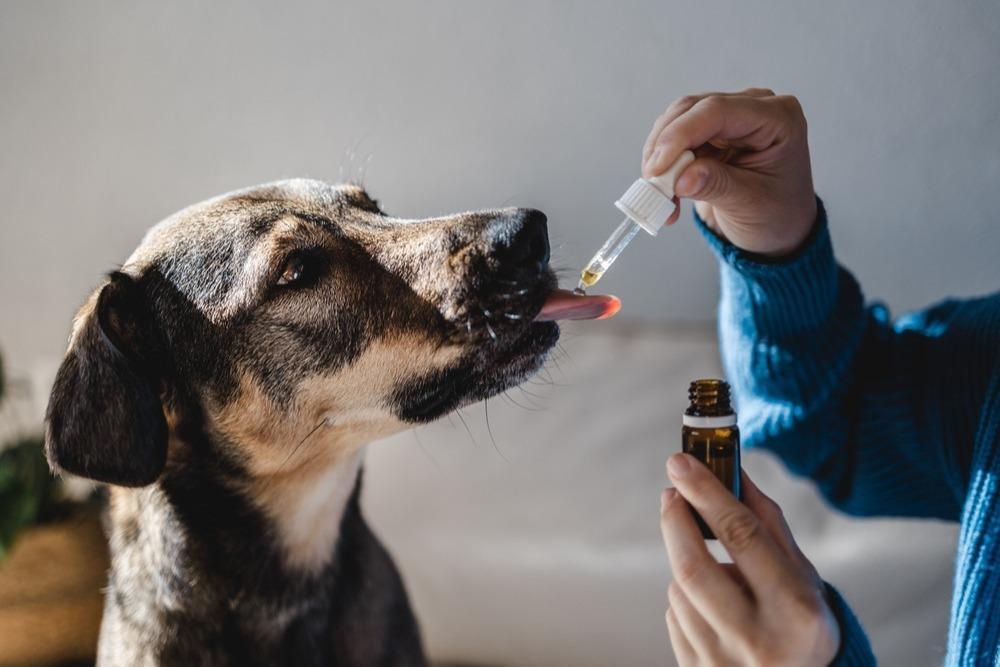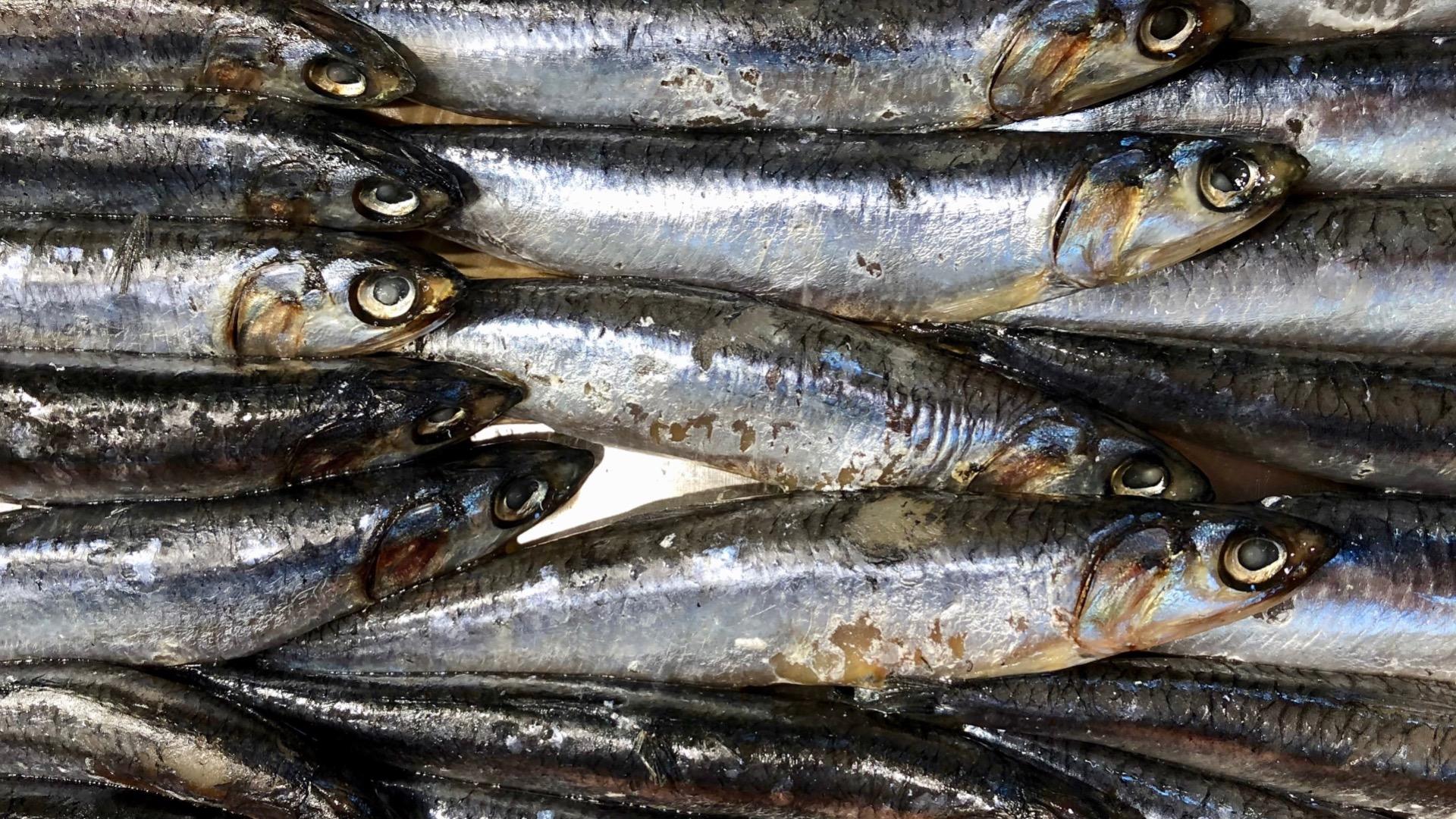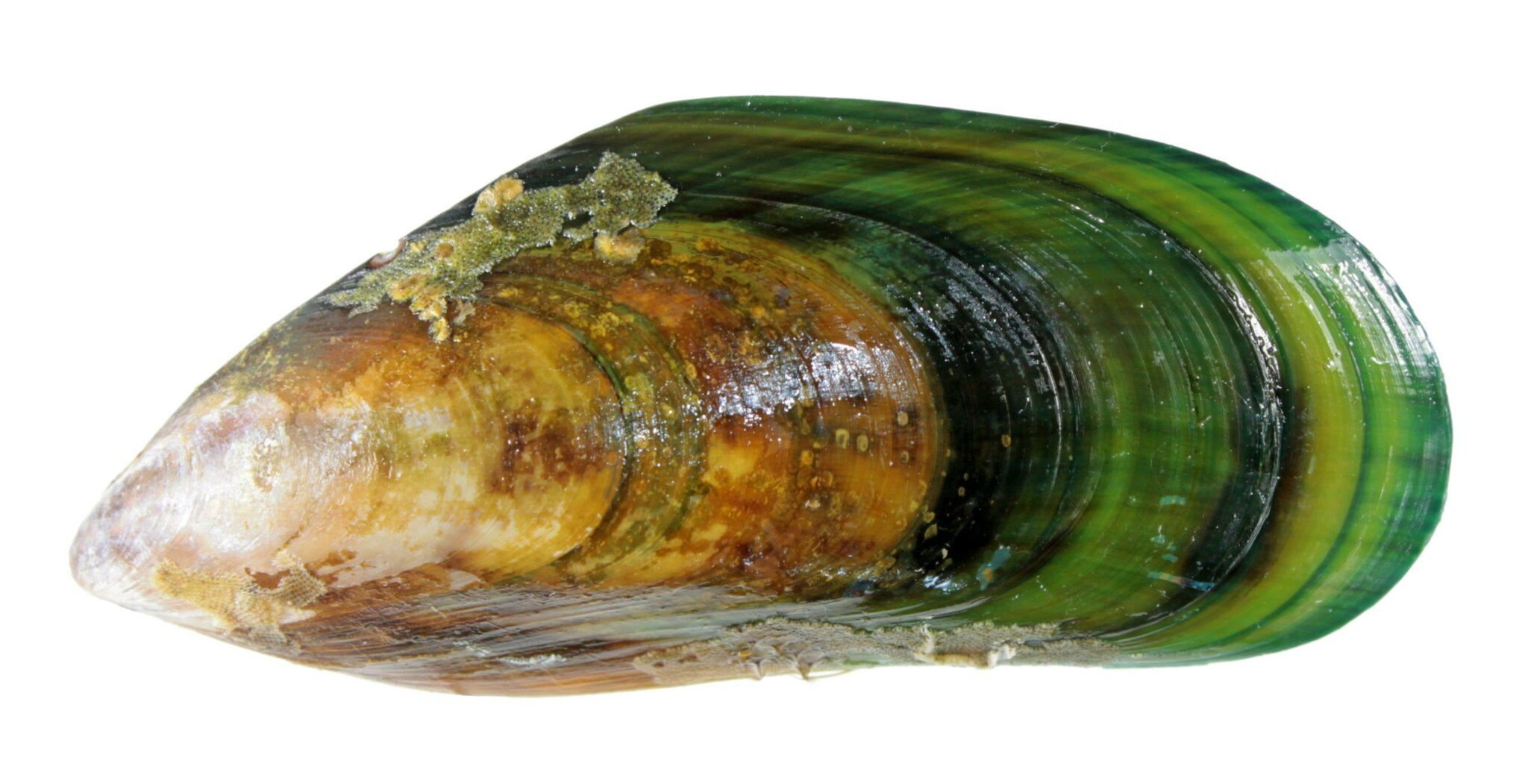-
£19.99

Nutrients for Bone and Joint Health in Pets
- January 10, 2022
- 5 mins 3 secs
There’s a difference between nutrients and foods – nutrients are what you find in foods. Whilst it can be a somewhat reductionist approach to health, if we know the role of certain nutrients, it can help us understand why we need to include them in our pet’s diet.
In this blog, we thought we’d look at some of the most important nutrients for bone and joint health in pets.
Bone is a light, yet strong connective tissue consisting of around 30% collagen and other matrix proteins with around 70% minerals. These minerals include calcium and phosphorus, but magnesium, sodium and potassium are also present in conjugated form.
Bones come together to form joints. The type of joint formed determines the degree and direction of motion. For example, joints with a ball and socket formation allow for a rotation whilst hinge joints only allow for bending and straightening. In a joint, the ends of the bones are covered in cartilage, which helps reduce friction as joints move. With age, this cartilage can degrade. Tendons connect muscle to bone and are made up mostly of collagen. Ligaments surround joints and help to stabilise them. They also connect bone to bone.
Inappropriate levels of calcium and phosphorus during growth therefore understandably contribute to bone deformities and skeletal disorders.
An optimal calcium intake is necessary for bone health at all stages of life. Dietary requirements for calcium are determined by the need for bone development and bone maintenance, which vary throughout life, being higher during puppyhood, adolescence, during pregnancy and lactation, and in the aging.
When imbalanced levels of calcium are present, it can result in abnormal skeletal formation and/or function.
Causes of Calcium Imbalance
Findings Here https://www.ncbi.nlm.nih.gov/pmc/articles/PMC1240026/
Vitamin D plays an indirect role in bone health by managing calcium levels in the body. It controls absorption of calcium in the intestine and the amount of calcium excreted by the kidneys. If Vitamin D levels are low, then the intestines struggle to absorb calcium.
Calcium is key to bone mineralisation (hardening), without calcium, bones are unable to form correctly. Not only that, but due to the lack of circulating calcium, the body mobilises it from the bones by way of increased parathyroid hormone. This not only weakens the bones, but it also creates a new issue, namely secondary hyperparathyroidism.
Vitamin D deficiency include symptoms like:
Where a degree of flexibility is required, cartilage is a rubberlike tissue that offers semi-flexible support for structures. The other function of cartilage is to prevent friction and enable smooth movement around joints.
Cartilage is formed by chondrocytes which mainly consist of collagen and proteoglycans.
Ligaments are made from tough, fibrous, dense connective tissue. They are made up of collagen, elastin, proteoglycans and a range of minerals including copper, manganese and calcium. Key to proteoglycan structure are the GAG’s chondroitin and dermatan sulphate.
Tendons are very similar in structure and function as connectors that join muscle to bone. They are capable of carrying high tensile or compressive forces, facilitating movement around a joint. They have proportionally more collagen and less proteoglycan content as a result of the need for an even tougher structure.
Joint degradation is characterised by inadequate GAG, proteoglycan and collagen synthesis to renew tissue in the face of degradation caused by physical stress, trauma, autoimmunity or ageing.
Vitamin C is an essential for two enzymes required in collagen synthesis, so sufficient amounts are necessary for optimal joint (and bone) health in the canine.
Sources of Vitamin C:
The body uses glucosamine to build and repair cartilage.
With age, cartilage can become less flexible and start to break down. This can lead to pain, inflammation, and tissue damage, which, for example, occurs in osteoarthritis.
It is thought that glucosamine might slow this process and benefit cartilage health.
CS is a sulfated glycosaminoglycan (GAG) and as we mentioned, theses are key to joint health.
It is thought that CS has a number of benefits in joint health:
As you have likely gathered, there are a number of nutrients that are important for joint health – this list is not exhaustive. Join us in our next blog where we will share our top superfoods for bone and joint health.
Thanks for reading,
MPN Team
In this blog, we thought we’d look at some of the most important nutrients for bone and joint health in pets.
Bone is a light, yet strong connective tissue consisting of around 30% collagen and other matrix proteins with around 70% minerals. These minerals include calcium and phosphorus, but magnesium, sodium and potassium are also present in conjugated form.
Bones come together to form joints. The type of joint formed determines the degree and direction of motion. For example, joints with a ball and socket formation allow for a rotation whilst hinge joints only allow for bending and straightening. In a joint, the ends of the bones are covered in cartilage, which helps reduce friction as joints move. With age, this cartilage can degrade. Tendons connect muscle to bone and are made up mostly of collagen. Ligaments surround joints and help to stabilise them. They also connect bone to bone.
Bone Health
Bone starts as a cartilage model which gets slowly replaced. Osteoblasts are the cells that form new bone; think of it as a blast that spreads, and osteoblasts spread to form new bone. Osteoblasts secrete osteoids which are simply unmineralized bone tissue. Soon after the osteoid is laid down, inorganic salts (calcium and phosphorus) are deposited which forms the hardened material that we know as bone.
Inappropriate levels of calcium and phosphorus during growth therefore understandably contribute to bone deformities and skeletal disorders.
Calcium
Calcium is one of the most abundant minerals in the body.
An optimal calcium intake is necessary for bone health at all stages of life. Dietary requirements for calcium are determined by the need for bone development and bone maintenance, which vary throughout life, being higher during puppyhood, adolescence, during pregnancy and lactation, and in the aging.
When imbalanced levels of calcium are present, it can result in abnormal skeletal formation and/or function.
Causes of Calcium Imbalance
- Vitamin D imbalance
- Kidney disease
- Liver disease
- Thyroid or parathyroid gland issues
- Diets rich in phytate and/or oxalate
- Primary hyperparathyroidism
- Cancer
- Certain medications
- Glucocorticoids promote calcium depletion
- High sodium diets – when sodium leaves the body it takes calcium along with it
- Raw meaty bones
- Sardines with bones
- Salmon
- Kale (cooked)
- Chia Seeds
- Bok Choi
- Egg
- Broccoli
- Liver
Vitamin D
Vitamin D is actually a hormone that promotes calcium absorption. In human health, you will have heard it referenced as the sunshine vitamin as it is produced in the skin in response to sunlight (UV) exposure. In studies of hip fractures in humans, there appears to be a seasonal variation; more occur during winter months and fracture patients often have low vitamin D status. When supplemented with Vitamin D and calcium, incidences of fractures often reduce.
Findings Here https://www.ncbi.nlm.nih.gov/pmc/articles/PMC1240026/
Vitamin D plays an indirect role in bone health by managing calcium levels in the body. It controls absorption of calcium in the intestine and the amount of calcium excreted by the kidneys. If Vitamin D levels are low, then the intestines struggle to absorb calcium.
Calcium is key to bone mineralisation (hardening), without calcium, bones are unable to form correctly. Not only that, but due to the lack of circulating calcium, the body mobilises it from the bones by way of increased parathyroid hormone. This not only weakens the bones, but it also creates a new issue, namely secondary hyperparathyroidism.
Vitamin D deficiency include symptoms like:
- Simultaneous deficiency/imbalance in calcium/phosphorus,
- Rickets (soft and weak bones in young dogs),
- Osteomalacia (soft and weak bones in adult dogs),
- Osteoporosis (weak bones leading to fractures),
- Neurological abnormalities,
- Hypocalcemia (low calcium levels),
- Elevated parathyroid hormone (symptoms include bone pain, depression, kidney stones, hypertension, cardiac arrhythmias, and kidney failure),
- Posterior paralysis,
- Ataxia (neurological issues including gait abnormality, difficulty walking, tremors),
- Quadriparesis (weakness in all four limbs).
- Flesh of fatty fish (salmon, tuna and mackerel)
- Fish Liver Oils
- Beef Liver
- Egg Yolks
Joint Health
Other than the skeleton, which provides a rigid structural framework for the body, there are other connective tissues that provide support.
Where a degree of flexibility is required, cartilage is a rubberlike tissue that offers semi-flexible support for structures. The other function of cartilage is to prevent friction and enable smooth movement around joints.
Cartilage is formed by chondrocytes which mainly consist of collagen and proteoglycans.
Ligaments are made from tough, fibrous, dense connective tissue. They are made up of collagen, elastin, proteoglycans and a range of minerals including copper, manganese and calcium. Key to proteoglycan structure are the GAG’s chondroitin and dermatan sulphate.
Tendons are very similar in structure and function as connectors that join muscle to bone. They are capable of carrying high tensile or compressive forces, facilitating movement around a joint. They have proportionally more collagen and less proteoglycan content as a result of the need for an even tougher structure.
Joint degradation is characterised by inadequate GAG, proteoglycan and collagen synthesis to renew tissue in the face of degradation caused by physical stress, trauma, autoimmunity or ageing.
Vitamin C
Vitamin C is a water-soluble vitamin, antioxidant, and essential co-factor for collagen biosynthesis, carnitine and catecholamine metabolism, and dietary iron absorption. Whilst humans are unable to synthesize it themselves, dogs seemingly can in adequate amounts.
Vitamin C is an essential for two enzymes required in collagen synthesis, so sufficient amounts are necessary for optimal joint (and bone) health in the canine.
Sources of Vitamin C:
- Peppers
- Carrots
- Pumpkin
- Sweet Potatoes
- Seaweed
- Blueberries
Glucosamine
Glucosamine is a natural sugar that exists in the fluid around the joints, as well as in animal bones, bone marrow, shellfish, and fungi.
The body uses glucosamine to build and repair cartilage.
With age, cartilage can become less flexible and start to break down. This can lead to pain, inflammation, and tissue damage, which, for example, occurs in osteoarthritis.
It is thought that glucosamine might slow this process and benefit cartilage health.
Chondroitin
Chondroitin sulfate (CS) is a major component of the extracellular matrix (ECM) of many connective tissues, including cartilage, bone, skin, ligaments and tendons.
CS is a sulfated glycosaminoglycan (GAG) and as we mentioned, theses are key to joint health.
It is thought that CS has a number of benefits in joint health:
- CS has been reported to have anti-inflammatory effects
- increases type II collagen and proteoglycan (PG) synthesis
- CS has been demonstrated to have anti-apoptotic properties
- Functions as an antioxidant
As you have likely gathered, there are a number of nutrients that are important for joint health – this list is not exhaustive. Join us in our next blog where we will share our top superfoods for bone and joint health.
Thanks for reading,
MPN Team
Customer Reviews
Explore related products
Related articles

Dietary NeedsDisease ManagementGeneral HealthArthritis
The Low Down on Spondylosis in Dogs
Dec 14 2023
•
12 mins 40 secs

Dietary NeedsDisease ManagementGeneral HealthArthritis
2 Types of Autoimmune Arthritis
Mar 01 2023
•
5 mins

Dietary NeedsDisease ManagementGeneral HealthArthritis
The Link Between Leaky Gut and Arthritis
Jan 31 2023
•
9 mins 40 secs

Dietary NeedsDisease ManagementGeneral HealthArthritis
4 Times You Don’t Want To Feed Veg To Your Dog
Jun 21 2022
•
3 mins 58 secs

Dietary NeedsDisease ManagementGeneral HealthArthritis
Do Herbs Have a Place in Canine Osteoarthritis?
May 03 2022
•
4 mins 35 secs

Dietary NeedsDisease ManagementGeneral HealthArthritis
5 Wonderful Herbs for Dog Joint Care
Feb 07 2022
•
5 mins 3 secs

Dietary NeedsDisease ManagementGeneral HealthArthritis
5 Superfoods for Joint Health in Dogs
Jan 12 2022
•
4 mins 52 secs

Dietary NeedsDisease ManagementGeneral HealthArthritis
Nutrients for Bone and Joint Health in Pets
Jan 10 2022
•
5 mins 3 secs

Dietary NeedsDisease ManagementGeneral HealthArthritis
Why Your Dog Needs Vitamin B6
Nov 30 2021
•
3 mins 7 secs

Dietary NeedsDisease ManagementGeneral HealthArthritis
Why Does My Dog Need Minerals – Part Two
Sep 23 2021
•
12 min read

Dietary NeedsDisease ManagementGeneral HealthArthritis
Why Does My Dog Need Minerals – Part One
Sep 22 2021
•
7 min read

Dietary NeedsDisease ManagementGeneral HealthArthritis
Top Tips to Help Your Dog Lose Weight
Sep 16 2021
•
5 min read

Dietary NeedsDisease ManagementGeneral HealthArthritis
Keeping Your Senior Dog Healthy
Aug 17 2021
•
5 min read

Dietary NeedsDisease ManagementGeneral HealthArthritis
Can Nutrition Support Joint Health?
Aug 10 2021
•
9 min read

Dietary NeedsDisease ManagementGeneral HealthArthritis
Why Does My Dog Need Folate
Jun 30 2021
•
5 min read

Dietary NeedsDisease ManagementGeneral HealthArthritis
Lectins and Should My Dog Eat Them?
Apr 12 2021
•
6 min read

Dietary NeedsDisease ManagementGeneral HealthArthritis
Low Histamine Diets, Why and When!
Apr 07 2021
•
7 min read

Dietary NeedsDisease ManagementGeneral HealthArthritis
Your Puppy’s Microbiome
Mar 31 2021
•
4 min read

Dietary NeedsDisease ManagementGeneral HealthArthritis
Obesity in Pets Part 2
Mar 02 2021
•
7 min read

Dietary NeedsDisease ManagementGeneral HealthArthritis
Dogs in pain – what is it and how to look for it?
Jan 28 2021
•
8 min read

Dietary NeedsDisease ManagementGeneral HealthArthritis
Why Does My Dog Keep Licking?
Jan 11 2021
•
9 min read

Dietary NeedsDisease ManagementGeneral HealthArthritis
Why is My Dog Losing His Hair?
Jan 04 2021
•
7 min read

Dietary NeedsDisease ManagementGeneral HealthArthritis
How Traditional Chinese Medicine Can Help My Dog
Oct 21 2020
•
7 min read

Dietary NeedsDisease ManagementGeneral HealthArthritis
Obesity and Musculoskeletal Health in Dogs
Oct 06 2020
•
6 min read

Dietary NeedsDisease ManagementGeneral HealthArthritis
Dog Massage – What you Need to Know
Sep 24 2020
•
9 min read

Dietary NeedsDisease ManagementGeneral HealthArthritis
How to Choose a Good Joint Supplement
Sep 17 2020
•
7 min read

Dietary NeedsDisease ManagementGeneral HealthArthritis
Why Zinc is Important for your Dog
Sep 10 2020
•
8 min read

Dietary NeedsDisease ManagementGeneral HealthArthritis
Natural Arthritis Guide and Herbs to Help Dogs
Aug 14 2020
•
18 min read

Dietary NeedsDisease ManagementGeneral HealthArthritis
7 Wonderful Herbs for Dogs
Jul 06 2020
•
9 min read

Dietary NeedsDisease ManagementGeneral HealthArthritis
Essential Fats for my Dog’s Diet: The Ultimate Guide
Mar 24 2020
•
10 min read

Dietary NeedsDisease ManagementGeneral HealthArthritis
Groovy Green Lipped Mussels for Joints
Feb 28 2020
•
2 min read

Dietary NeedsDisease ManagementGeneral HealthArthritis
Itching has become such an epidemic
Feb 18 2020
•
6 min read

Dietary NeedsDisease ManagementGeneral HealthArthritis
How to choose the right supplements for my pet!
Nov 15 2019
•
6 min read
✕









